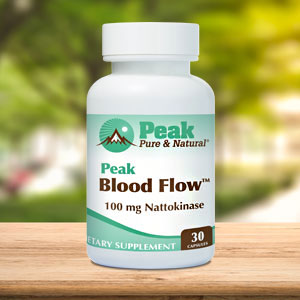Get Easy Health Digest™ in your inbox and don’t miss a thing when you subscribe today. Plus, get the free bonus report, Mother Nature’s Tips, Tricks and Remedies for Cholesterol, Blood Pressure & Blood Sugar as my way of saying welcome to the community!
Genetic study dives into restless leg syndrome

Restless leg syndrome (RLS) is a frustrating condition that affects as much as ten percent of the U.S. population, especially women and older adults.
The symptoms often come at the worst possible time: at night, when you’re trying to sleep.
It starts with a throbbing, itching or uncomfortable sensation in the legs and an overwhelming need to move them. Shifting the legs seems to relieve the discomfort temporarily, but the symptoms soon return.
On its own, this may not sound like a big deal, especially compared with things like diabetes or heart disease.
But RLS often goes hand in hand with these conditions, and more…
Health risks of RLS
A study conducted a few years back by researchers at Brigham and Women’s Hospital in Boston found that if you have restless leg syndrome, you have a 40 percent higher chance of dying in the next eight years.
Other scientific evidence has tied restless leg syndrome to an increased risk of kidney failure, diabetes and cancer.
And, though it is not an autoimmune disease, restless leg syndrome is a symptom of several autoimmune diseases, including rheumatoid arthritis, Sjogren’s Syndrome, Crohn’s disease and inflammatory bowel diseases.
While RLS doesn’t cause any of these conditions, the associations are enough to spur more research into the origins of RLS, how to treat it, and even, prevent it…
That’s why an international research team from Germany and Britain have focused on the genetics behind RLS. They were looking for biomarkers — genetic signatures that could be used to predict and identify the condition.
What genes reveal about RLS
Co-author Dr. Steven Bell from the University of Cambridge said: “This study is the largest of its kind into this common — but poorly understood — condition.
“By understanding the genetic basis of restless leg syndrome, we hope to find better ways to manage and treat it, potentially improving the lives of many millions of people affected worldwide.”
Two of the genetic differences identified by the team from pooled data of over 1000,000 patients involve genes known as glutamate receptors — which are important for nerve and brain function. This information could potentially be used to develop new drugs to treat RLS.
It has also helped target existing drugs, such as anticonvulsants, that in early trials have shown positive responses in patients with RLS.
Surprisingly, researchers found no strong genetic differences between men and women, even though the condition is twice as common in women. They say this may suggest a complex interaction of genetics and the environment (including hormones) could be the reason behind the gender differences.
Natural ways to deal with RLS
Previous studies may provide some insight into how to relieve RLS…
Iron. Low levels of iron in the blood are thought to trigger RLS, since it can cause a reduction in the neurotransmitter dopamine. This hasn’t been proven, but definitely not ruled out.
So one thing you can do is to be sure you’re not iron deficient. Be careful if you’re taking acid reducers, such as Prilosec or Prevacid, which can hamper the body’s ability to absorb iron and other nutrients
Foot wrap. Researchers at the Lake Erie Institute developed a foot wrap that puts pressure on two muscles in the foot: the abductor hallucis and the flexor hallucis brevis. Participants in a study who used the leg wrap reduced their restless nights by 82 percent.
An anti-inflammatory diet. Like so many conditions, RLS seems to have ties to inflammation. Food is our best weapon against inflammation. Fermented foods are a great place to start.
Cut out caffeine, alcohol, and tobacco. These three substances may make RLS symptoms worse for a lot of people.
Get more exercise. Research shows RLS is more common in people who are sedentary and overweight. One study even found that resistance training and aerobic exercise improve RLS symptoms. Studies show yoga and stretching can improve symptoms, too.
Editor’s note: There are perfectly safe and natural ways to decrease your risk of blood clots including the 25-cent vitamin, the nutrient that acts as a natural blood thinner and the powerful herb that helps clear plaque. To discover these and other secrets of long-lived hearts, click here for Hushed Up Natural Heart Cures and Common Misconceptions of Popular Heart Treatments!
Sources:
Genetics study points to potential treatments for restless leg syndrome — Eureka Alert
Genome-wide meta-analyses of restless legs syndrome yield insights into genetic architecture, disease biology and risk prediction — Nature Genetics
Restless Legs Syndrome Linked To Earlier Death Risk In Men — Medical News Today
Prospective study of restless legs syndrome and total and cardiovascular mortality among women — Neurology
Restless leg syndrome — The Autoimmune Registry
Exercise and restless legs syndrome: a randomized controlled trial — Journal of the American Board of Family Medicine














